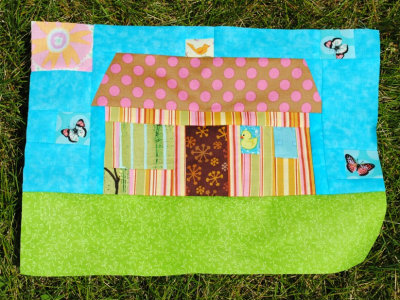
The question:
I’m looking for some advice on how to become an independent Regulation 33 inspector of children’s homes. What training would I need to undertake and where this can be sourced? I’ve recently retired from my post of registered manager of a residential children’s home after 10 years. I have a comprehensive working knowledge of national minimum standards, children’s homes regulations, the Children Act and the inspection process.
Jonathan Stanley writes:
Under Regulation 33 of the Children’s Homes Regulations 2001, all children’s homes must receive monthly monitoring visits. The visits may be unannounced and could be carried out by an independent visitor, a director responsible for managing another part of the provider organisation or an employee who is not directly concerned with the running and conduct of the home in question. The visitor is expected to interview some of the children, their parents/relatives and staff at the home, inspect the premises and prepare a written report. Many individuals who have recently left social care undertake Regulation 33 visits.
The government is concerned about the variable quality of Regulation 33 inspections, particularly in situations where the visitors are too closely associated with the provider organisation. The Department for Education (DfE) is consulting on new proposals to ensure Regulation 33 visits are conducted to a higher standard. It proposes that Regulation 33 visits should be conducted by a person who is independent of the conduct of the home, i.e. not involved in its management, care planning, commissioning or financing. The focus must be on effective safeguarding, promoting welfare and the fitness of the premises.
As a result, some current practice will need to change considerably. It may be that some procedures will need to change, while certain individuals will need upskilling. Some homes may decide to they need to find new visitors who possess the required knowledge and expertise.
Becoming a Regulation 33 visitor
There are no known training courses or accreditations for Regulation 33 visitors. However, anyone who wishes to undertake a regulatory or inspectorial role should be able to demonstrate obvious, recent, successful and substantial children’s homes management experience. You should also hold a relevant professional qualification.
As a minimum, when interviewed by the provider and local authority, you should be able to demonstrate a thorough working knowledge and understanding of the legal framework, guidance and standards governing children’s homes. You may have monitoring or evaluation experience and this may have included a regulatory role, although this is not a requirement. Communication skills with young people and adults are essential, as is competent and confident use of IT.
A written report of each visit will be sent to the registered provider and manager of the home, Ofsted, placing authorities and, upon request, to the local authority responsible for the area in which the home is located. The reports need to be balanced, fair and evidence based, analytical and report strengths as well as areas of weakness. Triangulated evidence from interviews, observations or records is expected. The report should directly inform the development plan for the home. Anything you can do to demonstrate the ability to write reports in this way would be an advantage.
The ICHA will launch a Regulation 33 practice guide and national benchmark this month.


 Assistive technology and dementia: practice tips
Assistive technology and dementia: practice tips  A trauma-informed approach to social work: practice tips
A trauma-informed approach to social work: practice tips 




 Find out how to develop your emotional resilience with our free downloadable guide
Find out how to develop your emotional resilience with our free downloadable guide  Develop your social work career with Community Care’s Careers and Training Guide
Develop your social work career with Community Care’s Careers and Training Guide  ‘Dear Sajid Javid: please end the inappropriate detention of autistic people and those with learning disabilities’
‘Dear Sajid Javid: please end the inappropriate detention of autistic people and those with learning disabilities’ Ofsted calls for power to scrutinise children’s home groups
Ofsted calls for power to scrutinise children’s home groups Seven in eight commissioners paying below ‘minimum rate for home care’
Seven in eight commissioners paying below ‘minimum rate for home care’
 Facebook
Facebook X
X LinkedIn
LinkedIn Instagram
Instagram
Comments are closed.